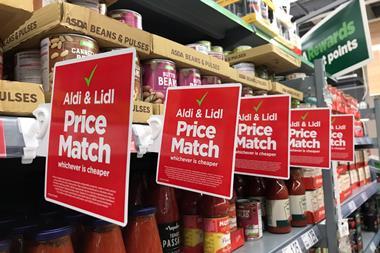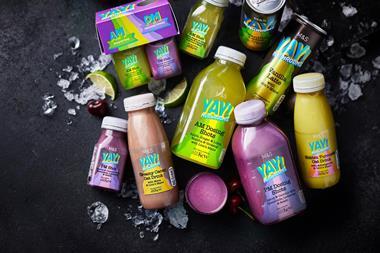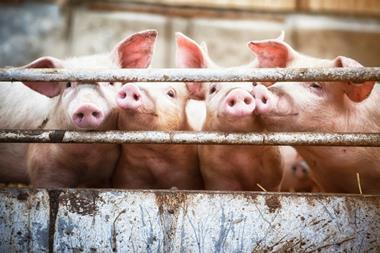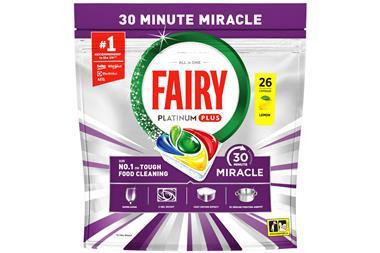The Christmas trading period this year clearly established Tesco, Asda and Waitrose as winners, according to this month’s Homescan Total Till.
All three retailers achieved sales growths of between 10% and 20% over the same four-week period last year, and their market shares at the year-end were ahead of last year.
However, the other TradeTrak retailers, with the exception of Morrisons (growing as a result of Safeway store conversions), have lost share over the past 12 months.
Asda achieved the highest spend per visit at £41 during the four weeks to December 25, ahead of Tesco and Sainsbury at £36. Waitrose is close behind at £33 and ahead of Morrisons at £31. Waitrose also had a higher spend per buyer than Morrisons during the four weeks, at £114. This was not far behind Sainsbury, indicative that shoppers were prepared to indulge and even to trade up for the festive period.
Despite Sainsbury’s total share of spend being nearly 3% lower than Asda’s and it having fewer shoppers, its four-week penetration of shoppers this Christmas held up at 37% compared with 36% last year. The food-only performance of Sainsbury since the late summer has also improved, with market share increasing from a low point of 16.5% back to 16.8%. This suggests there is still much to play for as a focused food retailer with untapped small store format potential.
But without significant large store acquisitions, which will be difficult to find and to fund, it’s going to be a challenge for Sainsbury to get critical mass in general merchandise, clothing or electrical.
Across the industry as a whole, business was strong in the weeks running up to Christmas Day but more difficult in the week preceding New Year. Mike Watkins, manager of retailer services, reports: “ACNielsen Scantrack confirms that for many food retailers, particularly those more dependent on high-street locations, incremental sales were hard to find. Across the four weeks as a whole, out-of-town sales at food retailers, inclusive of non-food, grew by 10% but on the high street by just 2%. C-stores also had reasonable trade in the days between Christmas and New Year.”
This shows how important location, weather and seasonal preferences have become and how the strong have grown stronger in a changing food retail world.
All three retailers achieved sales growths of between 10% and 20% over the same four-week period last year, and their market shares at the year-end were ahead of last year.
However, the other TradeTrak retailers, with the exception of Morrisons (growing as a result of Safeway store conversions), have lost share over the past 12 months.
Asda achieved the highest spend per visit at £41 during the four weeks to December 25, ahead of Tesco and Sainsbury at £36. Waitrose is close behind at £33 and ahead of Morrisons at £31. Waitrose also had a higher spend per buyer than Morrisons during the four weeks, at £114. This was not far behind Sainsbury, indicative that shoppers were prepared to indulge and even to trade up for the festive period.
Despite Sainsbury’s total share of spend being nearly 3% lower than Asda’s and it having fewer shoppers, its four-week penetration of shoppers this Christmas held up at 37% compared with 36% last year. The food-only performance of Sainsbury since the late summer has also improved, with market share increasing from a low point of 16.5% back to 16.8%. This suggests there is still much to play for as a focused food retailer with untapped small store format potential.
But without significant large store acquisitions, which will be difficult to find and to fund, it’s going to be a challenge for Sainsbury to get critical mass in general merchandise, clothing or electrical.
Across the industry as a whole, business was strong in the weeks running up to Christmas Day but more difficult in the week preceding New Year. Mike Watkins, manager of retailer services, reports: “ACNielsen Scantrack confirms that for many food retailers, particularly those more dependent on high-street locations, incremental sales were hard to find. Across the four weeks as a whole, out-of-town sales at food retailers, inclusive of non-food, grew by 10% but on the high street by just 2%. C-stores also had reasonable trade in the days between Christmas and New Year.”
This shows how important location, weather and seasonal preferences have become and how the strong have grown stronger in a changing food retail world.



















No comments yet